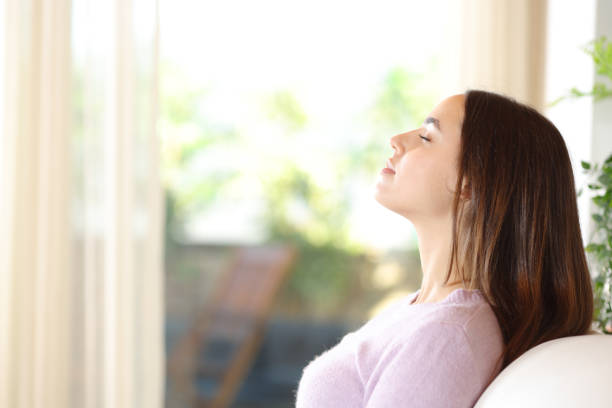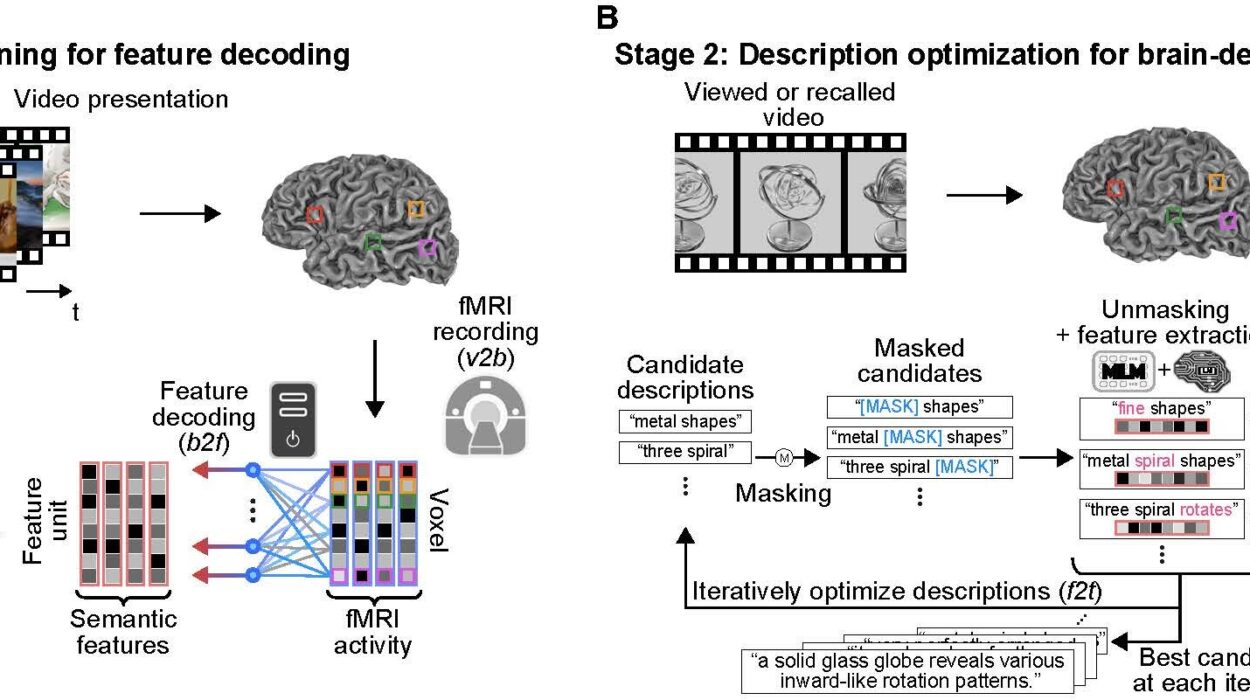Breathing is the most natural act we perform. From the moment we are born until the final moments of life, the rhythm of inhale and exhale sustains us. Yet, most of the time, we hardly notice it. We take thousands of breaths every day without giving them much thought. But beneath this ordinary rhythm lies extraordinary power—the power to calm our minds, to regulate our emotions, and to restore balance in times of stress and anxiety.
When life feels overwhelming, when our thoughts race, and when anxiety tightens its grip, our breath can become shallow and rapid. This is no coincidence. Stress changes the way we breathe, and in turn, the way we breathe shapes the way we feel. That means breath is not only a mirror of our inner state but also a tool to change it.
Breathing techniques are ancient practices rediscovered and validated by modern science. They can lower stress hormones, slow heart rate, ease tension in the body, and bring a sense of calm to the stormy seas of the mind. In learning to breathe consciously, we learn to anchor ourselves—to find peace within chaos.
The Science of Stress, Anxiety, and Breath
To understand why breathing techniques are so effective, we need to first look at how stress and anxiety affect the body. Stress is not inherently bad; it is the body’s survival mechanism, activating what scientists call the sympathetic nervous system—our fight-or-flight response. When danger appears, the heart races, breathing quickens, muscles tighten, and adrenaline surges.
This is helpful if we’re escaping a threat, but in modern life, stress is often triggered by deadlines, financial worries, or constant notifications. Our bodies respond as though we’re being chased by a predator, even when the danger is only psychological. Chronic stress keeps our systems in overdrive, and anxiety—persistent fear and worry—magnifies this.
Here’s where breath comes in. Breathing is unique because it is both automatic and voluntary. Unlike digestion or heartbeat, we can consciously change our breath. When we slow and deepen our breathing, we activate the parasympathetic nervous system—often called the “rest and digest” system. This lowers heart rate, relaxes muscles, reduces stress hormones like cortisol, and sends signals of safety to the brain.
Science confirms what ancient yogis, monks, and healers have known for centuries: controlled breathing changes physiology. Functional MRI studies show that breathwork alters brain activity in areas linked to emotion and self-awareness. Research also demonstrates improvements in blood pressure, anxiety symptoms, and even immune function.
The Link Between Breath and the Mind
Our emotions are tightly linked to how we breathe. Think about it: when you are anxious, your breathing is shallow and fast. When you are angry, you may hold your breath or exhale forcefully. When you are calm, your breath is slow and steady.
The connection is so strong that deliberately changing breathing patterns can create the emotional state we want. By breathing as though we are calm, we can signal to the brain that we are safe—and the brain listens.
This feedback loop is one of the simplest and most powerful tools we have for emotional regulation. The breath is always with us, always available, and requires no equipment or external resource. It is both a medicine and a teacher, guiding us back to balance when life feels unsteady.
Breathing as an Ancient Medicine
Long before modern science, civilizations across the world recognized the healing power of the breath. In India, pranayama (the yogic science of breath control) has been practiced for thousands of years. The word itself means “expansion of life force.” In China, qigong and tai chi integrate breath with movement to cultivate balance and energy. Buddhist monks practice mindful breathing as a path to inner peace and enlightenment.
These traditions understood that the way we breathe shapes not only our bodies but also our minds and spirits. Today, many of these techniques are adapted and studied in clinical settings. They are used to treat stress disorders, PTSD, anxiety, and even chronic pain.
The Role of Breath in Modern Life
In our fast-paced, technology-driven world, stress and anxiety are at epidemic levels. We wake up to alarms, rush through commutes, and spend hours hunched over screens. Our nervous systems are overstimulated, and our breath reflects this—fast, shallow, and irregular.
This pattern of breathing signals the body that danger is present, even when it’s not, creating a vicious cycle of stress. By learning breathing techniques, we can break this cycle. Just a few minutes of mindful breathing can shift the nervous system, improve focus, and bring calm.
Breathwork is increasingly being introduced in schools, workplaces, and healthcare settings because of its simplicity and effectiveness. It is free, portable, and universally accessible. Whether you are a student facing exams, a professional under pressure, or someone struggling with anxiety, your breath is a tool you can carry with you anywhere.
Diaphragmatic Breathing: Returning to the Natural Breath
One of the most fundamental techniques for calming stress and anxiety is diaphragmatic breathing, also known as belly breathing. Most of us, especially under stress, breathe shallowly into the chest. But the diaphragm—a dome-shaped muscle beneath the lungs—is designed to expand deeply with each breath.
When we breathe with the diaphragm, the belly rises on the inhale and falls on the exhale. This type of breathing slows the heart, lowers blood pressure, and activates the parasympathetic nervous system.
Scientists have found that diaphragmatic breathing improves concentration, reduces cortisol, and enhances emotional regulation. It is often used in therapies for anxiety, panic disorder, and PTSD.
To practice: place one hand on the chest and one on the belly. Breathe in slowly through the nose, feeling the belly rise while the chest remains relatively still. Exhale gently, letting the belly fall. Continue for several minutes, focusing on the rhythm.
Box Breathing: The Breath of Balance
Box breathing is a simple yet powerful method often used by Navy SEALs, athletes, and those in high-stress professions. It involves equal lengths of inhaling, holding, exhaling, and holding again, forming the shape of a box.
The steady rhythm calms the nervous system, sharpens focus, and reduces anxiety. Research shows that this type of structured breathing lowers sympathetic activity and enhances cognitive control.
A typical pattern might be: inhale for 4 counts, hold for 4, exhale for 4, hold for 4. Repeat for several cycles.
4-7-8 Breathing: The Relaxation Breath
Popularized by Dr. Andrew Weil, the 4-7-8 technique is often called a “natural tranquilizer for the nervous system.” It is especially effective for easing anxiety before sleep.
The method is simple: inhale through the nose for 4 seconds, hold the breath for 7, then exhale slowly through the mouth for 8 seconds. The extended exhale enhances relaxation by stimulating the vagus nerve, which governs parasympathetic activity.
Many people report falling asleep faster and experiencing deeper rest after practicing this technique regularly.
Alternate Nostril Breathing: Finding Inner Harmony
In yoga, nadi shodhana, or alternate nostril breathing, is a technique said to balance the brain’s hemispheres and calm the mind. Scientifically, it has been shown to improve cardiovascular function, reduce stress, and increase mental clarity.
The practice involves closing one nostril while inhaling through the other, then switching sides on the exhale. This rhythmic pattern creates a sense of balance and harmony, making it especially helpful for anxiety rooted in restlessness or overthinking.
Resonance Breathing: Tuning into the Body’s Rhythm
Resonance breathing, sometimes called coherent breathing, involves slowing the breath to about five to six breaths per minute. This rhythm has been shown to optimize heart rate variability (HRV), a key marker of resilience and stress regulation.
When breath and heart rhythms synchronize, the entire nervous system enters a state of balance. Studies have shown resonance breathing can reduce symptoms of depression, anxiety, and even chronic pain.
Breathing and Mindfulness
Breathing techniques are even more powerful when combined with mindfulness—the practice of paying attention to the present moment with openness and curiosity. Mindful breathing teaches us not just to change our breath but to observe it, to notice its rhythm and texture without judgment.
This practice builds awareness of the body, calms racing thoughts, and strengthens the connection between mind and breath. Mindfulness-based stress reduction (MBSR), developed by Dr. Jon Kabat-Zinn, uses mindful breathing as a cornerstone practice and has been proven effective for reducing anxiety and improving quality of life.
Breathing in Movement
Breathwork is not limited to sitting still. Practices like yoga, tai chi, and qigong integrate breath with movement, creating a flow that calms both body and mind. Even walking meditation, where each step is coordinated with an inhale or exhale, can become a moving breathing technique.
Athletes also use breathwork to improve performance and recovery. Controlled breathing increases oxygen delivery, enhances endurance, and reduces stress under pressure.
Breath as a Lifelong Companion
The beauty of breathing techniques is their simplicity and accessibility. Unlike medications or complex therapies, the breath is always available, requiring no tools other than awareness. It can be practiced in a crowded office, a quiet bedroom, or a busy subway.
In moments of panic, when thoughts spiral and the world feels overwhelming, the breath is a reminder that we have an anchor within us. It brings us back to the present, slows the storm, and restores a sense of control.
A Daily Practice of Calm
Like any skill, the benefits of breathing techniques deepen with practice. A few minutes daily can build resilience over time, making stress easier to manage and anxiety less overwhelming.
It is helpful to create a daily ritual—perhaps beginning the morning with five minutes of diaphragmatic breathing, using box breathing before a stressful meeting, or practicing 4-7-8 before sleep. Over time, these practices become second nature, transforming the way we respond to life’s challenges.
The Bigger Picture: Breath and Well-Being
While breathing techniques are powerful tools, they are not a cure-all. They work best as part of a holistic approach to health, which includes nourishing food, physical activity, meaningful relationships, and restful sleep. Together, these elements create the foundation for resilience and calm.
Breath, however, is unique in its immediacy. When stress surges, we cannot instantly change our diet or circumstances, but we can always return to the breath. It is the doorway to inner calm, available in every moment.
Breathing as a Path to Freedom
Stress and anxiety often make us feel trapped—caught in cycles of worry, fear, and restlessness. But the breath is a key that unlocks the door to freedom. Each inhale reminds us we are alive; each exhale invites us to let go. Through breathing, we remember that calm is not something outside of us to be found, but something within us to be uncovered.
Breathing techniques do not erase life’s challenges, but they transform how we meet them. They give us space between stimulus and response, between fear and choice. They remind us that we are not helpless in the face of anxiety—that with each mindful breath, we reclaim our balance, our strength, and our peace.






